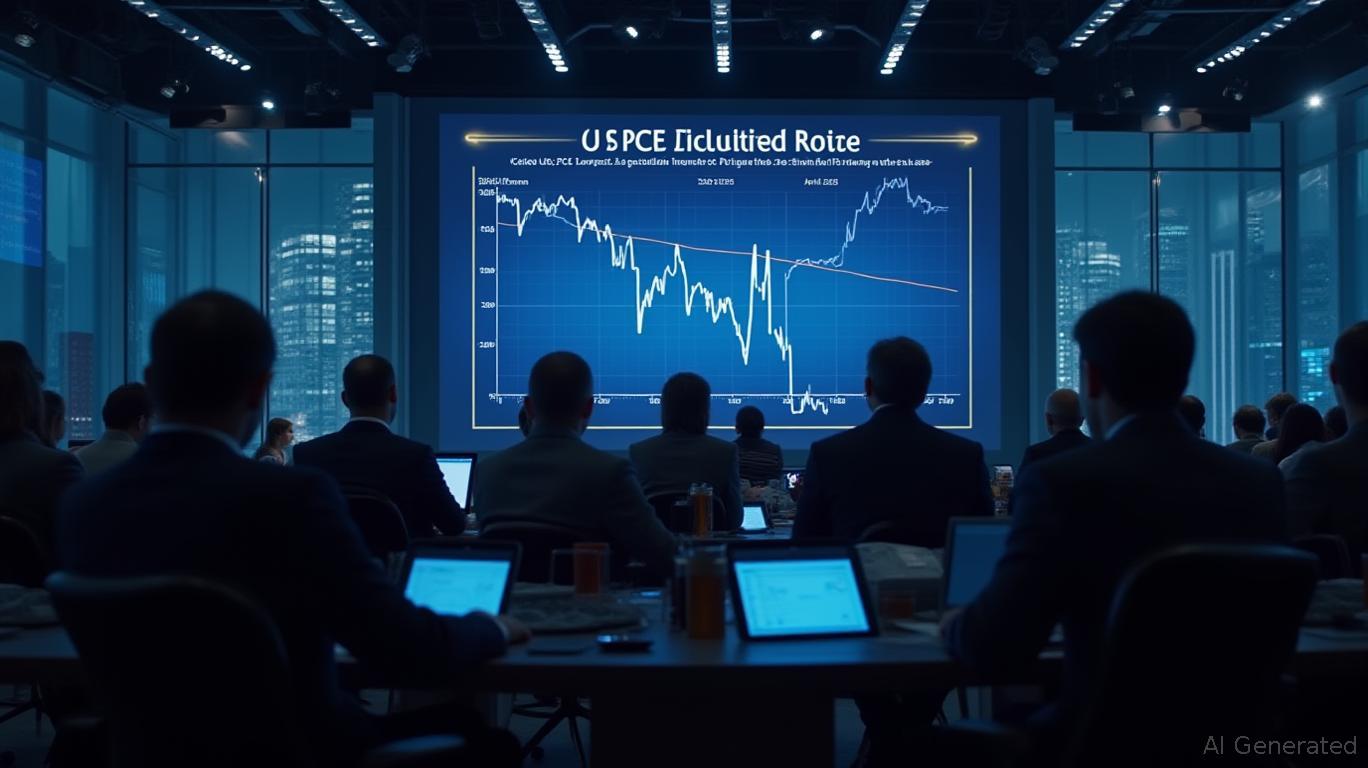Tariff Volatility and PCE Inflation: Navigating the Fed's Crossroads for Rate Cuts
The Federal Reserve faces a pivotal moment: subdued inflation data creates a tantalizing opening for rate cuts, but the specter of tariff-driven price spikes looms like a storm cloud. Investors must now decide whether to bet on the Fed's pivot or brace for a resurgence in inflation—a dilemma that could redefine fixed-income strategies in 2025. Here's why the crossroads is now, and how to position portfolios for either outcome.
The PCE Data: A Glimmer of Hope for Rate Cuts?
The April PCE inflation report delivered a mixed but cautiously optimistic signal. Annual headline inflation dipped to 2.1%, while core PCE—excluding volatile food and energy—held steady at 2.5%, a marginal decline from March. The slowdown in consumer spending (up just 0.2% after March's 0.7% surge) and a rebound in the savings rate to 4.9% suggest households are treading carefully, a dynamic that could further suppress near-term inflationary pressures.
But the data's true significance lies in its timing. The report does not yet reflect President Trump's April tariffs or the subsequent 90-day U.S.-China tariff pause.

The Tariff Wild Card: A Cloud on the Horizon
Analysts like Nationwide's Kathy Bostjancic warn that the calm may not last. The April data's lack of tariff impact is likely temporary. By late 2025, businesses may begin hiking prices to protect margins, potentially pushing core PCE back toward 3%—a level that would force the Fed to reconsider its stance. The Fed's May meeting minutes underscored this concern, with officials acknowledging “risks to inflation persistence” tied to trade policies.
The June PCE release will be pivotal. If the data shows a sharp uptick in prices—a likely outcome if tariffs bite—the Fed's patience may evaporate, leaving rate-cut hopes in tatters. Markets currently price in just a 25% chance of a July cut, a stark reminder of how fragile the Fed's latitude truly is.
The Fed's Delicate Balancing Act
The central bank is trapped between two competing forces: economic caution and inflationary uncertainty. While the April data supports a rate-cut narrative, the Fed's dual mandate demands vigilance. A premature pivot could embolden inflation, while overreacting to tariffs could stifle growth. The Fed's challenge is to thread the needle—something its May minutes suggest it is determined to do, but without overcommitting until tariff impacts crystallize.
Investment Implications: Navigating the Crossroads
The Fed's dilemma creates a high-stakes opportunity for fixed-income investors. Here's the strategy to capitalize on both scenarios:
Short-Term Bonds: The Prudent Play
With yields on short-term Treasuries (e.g., 2-year notes) hovering near 4.5%, investors can lock in higher returns while minimizing duration risk. . If the Fed cuts rates later this year, short-dated bonds will outperform, while their shorter maturity limits exposure to inflation shocks.Inflation-Linked Securities: The Hedge Against Tariff Fallout
Treasury Inflation-Protected Securities (TIPS) and ETFs like TIP offer a direct hedge against rising prices. Their principal adjusts with the CPI, ensuring investors are insulated if tariffs spark a late-year inflation surge. Pair these with short-term bonds to create a balanced portfolio.Avoid Long-Duration Debt
Stay away from 10-year or 30-year Treasuries, which face dual threats: rate cuts could be short-lived if inflation rebounds, and their longer duration amplifies losses in such a scenario.
Conclusion: Act Now—Before the Crossroads Becomes a Dead End
The Fed's crossroads is a fleeting moment. Current PCE data offers a lifeline for rate cuts, but tariff-driven inflation could snuff it out by year-end. Investors must act now to secure short-term gains while hedging against volatility. Positioning for both outcomes—through short-term bonds and inflation hedges—is not just
, but essential. The window to act is narrowing; the next PCE report in June will decide whether we pivot to cuts or brace for a hotter inflationary landscape.The stakes couldn't be higher. Choose wisely.

Comments
No comments yet